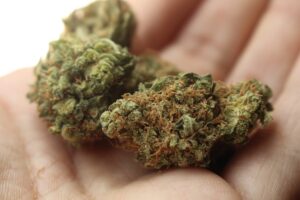
THCA flower, rich in the non-psychoactive cannabinoid THCA, is a natural and potential therapeutic alternative for pain management. It interacts with the endocannabinoid system to offer relief from various types of pain, including chronic, neuropathic, and inflammatory, without the psychoactive effects associated with THC. Users report that it's as effective as traditional pain relief methods but without the 'high'. The benefits are supported by growing scientific research and user testimonials. It's crucial to approach its use cautiously, starting with low doses to determine individual needs and ensuring compliance with local laws regarding cannabis-derived products. The anti-inflammatory and neuroprotective properties of THCA are notable, and the entourage effect from other cannabinoids and terpenes can enhance its analgesic effects. For those interested in THCA flower for pain relief, it's important to source high-quality products with a higher concentration of THCA than THC, verify legal status in your jurisdiction, and consult healthcare professionals to ensure safe and effective use in conjunction with other treatments or medications. THCA flower is a compelling option for those seeking natural pain management that fits within their health objectives and daily routines.
Discover the transformative potential of THCA flower tips, a natural remedy offering promising pain relief. This article delves into the science behind its analgesic properties and guides you through sourcing quality THCA flowers. Learn how to safely incorporate this cannabinoid-rich resource into your wellness routine, with a focus on dosage for beginners and experienced users. Additionally, navigate the legal landscape to responsibly utilize THCA flower for pain management. Unlock the benefits of THCA flower for pain relief and enhance your quality of life naturally.
- Unlocking Natural Pain Relief with THCA Flower: An Overview
- The Science Behind THCA and Its Analgesic Properties
- Sourcing Quality THCA Flowers for Effective Pain Management
- Optimal THCA Dosage for Pain: A Guide for Beginners and Experienced Users Alike
- Incorporating THCA Flower into Your Pain Relief Routine
- Navigating Legalities and Responsible Use of THCA Flower for Pain Relief
Unlocking Natural Pain Relief with THCA Flower: An Overview
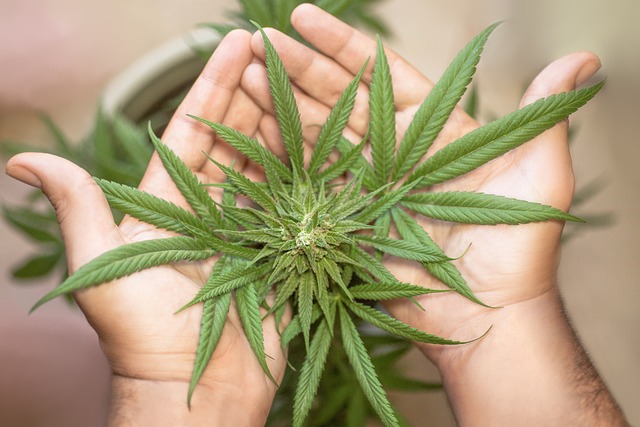
Discovering natural alternatives for pain management has become increasingly important for those seeking effective relief without the side effects associated with traditional pharmaceuticals. THCA flower, which contains the non-psychoactive cannabinoid tetrahydrocannabinolic acid (THCA), is emerging as a promising option. THCA, the raw form of THC found in raw cannabis plants or extracted for concentrated use, interacts with the body’s endocannabinoid system, offering potential therapeutic benefits. Users report that THCA flower can provide potent pain relief, particularly for neuropathic and inflammatory conditions. The unique properties of THCA suggest it may offer relief comparable to its psychoactive counterpart, THC, without the ‘high’ effect, making it a viable option for those sensitive to or wishing to avoid psychotropic substances. Research into its efficacy continues to grow, with anecdotal evidence and scientific studies alike pointing to its potential as a natural remedy for pain.
When considering THCA flower for pain relief, it’s crucial to understand the proper dosage and administration to maximize its benefits while minimizing any risks. Extracts containing higher concentrations of THCA can be particularly potent, so starting with small amounts and gradually adjusting as needed is recommended. Additionally, because the legal status of cannabis-derived products varies by region, it’s essential to comply with local laws and regulations when using THCA flower for pain relief. As a natural alternative, THCA flower offers a promising avenue for those seeking to alleviate their pain in a manner that aligns with their wellness goals and lifestyle preferences.
The Science Behind THCA and Its Analgesic Properties
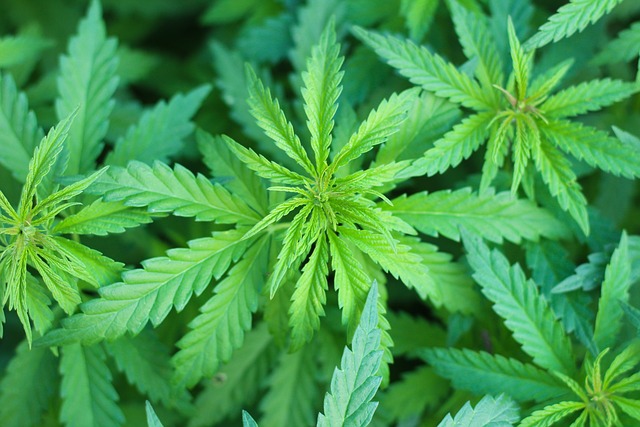
Delta-9-tetrahydrocannabinol acid (THCA) is a natural compound found in the cannabis plant that has garnered attention for its potential therapeutic properties, particularly as a source of pain relief. Unlike its well-known isomer delta-9-THC, THCA is non-psychoactive, making it an attractive option for those seeking the analgesic benefits without the psychoactive effects. Scientific research indicates that THCA interacts with the body’s endocannabinoid system by binding to both CB1 and CB2 receptors, which play a role in regulating pain, inflammation, and mood. This binding action is believed to influence the body’s response to pain by modulating neurotransmitter release and immune system responses, offering a natural approach to managing discomfort.
Furthermore, THCA flower for pain relief has been studied for its anti-inflammatory properties. Inflammation is a key component of many types of pain, and THCA’s ability to inhibit the production of pro-inflammatory cytokines suggests it could be beneficial in conditions where inflammation contributes to chronic pain. Additionally, THCA may also have neuroprotective effects, which could be advantageous for neuropathic pain relief. The presence of other cannabinoids and terpenes in the THCA flower can enhance its analgesic efficacy through the entourage effect, making it a potent natural remedy for those suffering from various types of pain.
Sourcing Quality THCA Flowers for Effective Pain Management

When exploring natural alternatives for pain management, THCA flowers have emerged as a promising option due to their rich cannabinoid profile. Sourcing high-quality THCA flowers is paramount for effective pain relief; the purity and potency of these flowers directly influence their therapeutic effectiveness. Consumers should look for reputable suppliers who offer lab-tested THCA flower strains, ensuring that the product contains a higher concentration of THCa as opposed to its psychoactive counterpart, THC. These tests also verify the absence of contaminants and provide accurate cannabinoid profiles. Opting for flowers with a higher THCa content can be particularly beneficial for pain relief, as THCa is believed to possess anti-inflammatory properties without the psychoactive effects associated with THC. Patients often report that high-quality THCA flowers help alleviate various types of pain, from chronic and neuropathic to inflammatory and menstrual discomfort. It’s crucial to consider the legality and regulatory compliance of THCA products in your region before purchase, ensuring adherence to local laws regarding cannabis-related products for personal use. By carefully selecting and sourcing THCA flowers from trustworthy cultivators and suppliers, individuals can harness their potential for pain management while prioritizing safety and quality.
Optimal THCA Dosage for Pain: A Guide for Beginners and Experienced Users Alike

THCA flower, or tetrahydrocannabinolic acid, is a non-psychoactive cannabinoid found in hemp and cannabis plants that has garnered attention for its potential therapeutic properties, particularly in pain management. As interest in natural remedies for pain grows, understanding the optimal dosage of THCA flower for pain relief becomes increasingly important for both beginners and experienced users.
For those new to THCA flower, it’s advisable to start with a low dose to gauge individual sensitivity and effects. A common starting point is around 1-2 mg of THCA per day, which can be incrementally increased as tolerance builds. It’s crucial to pay close attention to how your body responds, as the optimal dosage can vary greatly from person to person. Factors such as body weight, the condition being treated, and individual metabolism all play a role in determining the most effective dosage. For experienced users, a higher starting dose may be appropriate; however, it’s still recommended to adjust intake based on personal experience with pain relief and comfort.
Incorporating THCA flower into your pain management routine should be done thoughtfully, with consideration of other treatments or medications you may be taking. It’s always best to consult with a healthcare professional before starting any new wellness regimen, especially if you have pre-existing health conditions or are taking other medications. By following a dosage guide tailored to your unique needs and closely monitoring your body’s response, THCA flower can be a valuable addition to your pain relief strategy.
Incorporating THCA Flower into Your Pain Relief Routine
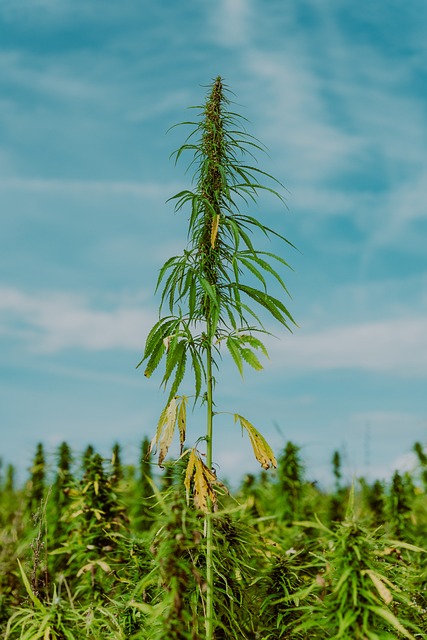
Incorporating THCA flower into your pain relief routine can offer a natural alternative to traditional pharmaceuticals. THCA, or Tetrahydrocannabinolic Acid, is a non-psychoactive cannabinoid found in raw cannabis plants, which, when heated, converts into the more commonly known THC. The therapeutic properties of THCA have been reported to be beneficial for pain relief due to its interaction with the body’s endocannabinoid system. Users often turn to THCA flower as a means to manage chronic and acute pain without the psychoactive effects associated with THC. This makes it an attractive option for those seeking targeted pain relief during their daily activities or before bed to aid in restful sleep, which can further assist in pain management.
When integrating THCA flower into your pain relief regimen, it’s important to consider dosage and method of consumption. THCA can be consumed in various ways, including smoking, vaporizing, or as an ingredient in edibles. Each method offers a different onset and duration of effects, which can impact the overall efficacy for pain relief. For instance, inhaled methods tend to offer quicker relief, making them ideal for acute pain episodes. In contrast, ingested THCA flower might take longer to take effect but can provide extended relief, suitable for chronic pain conditions. It’s also advisable to consult with a healthcare professional before starting any new treatment, especially if you are taking other medications or have underlying health concerns. This ensures that THCA flower complements your overall wellness plan effectively.
Navigating Legalities and Responsible Use of THCA Flower for Pain Relief
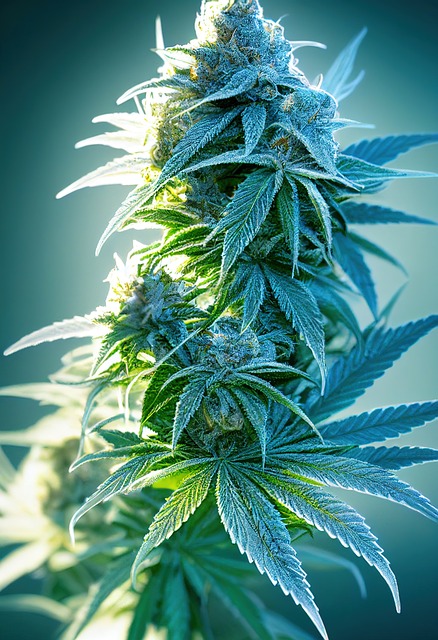
When exploring THCA flower as a natural remedy for pain relief, it’s crucial to first understand its legal status in your region. The legality of THCA flower, which is rich in cannabidiol acid (THC-A), varies across different states and countries. Users must adhere to local laws strictly, as possession and use can differ significantly. In the United States, for instance, the 2018 Farm Bill legalized hemp-derived products containing less than 0.3% THC on a dry weight basis, paving the way for many to legally access THCA flower for pain management. However, state laws can be more restrictive, so it’s imperative to verify compliance at both federal and state levels.
Once the legal considerations are addressed, responsible use becomes paramount. THCA flower is often touted for its potential analgesic properties without the psychoactive effects typically associated with its counterpart, delta-9-THC. Users seeking pain relief from THCA flower should start with recommended dosages based on individual tolerance and pain severity. It’s advisable to consult with a healthcare provider before integrating THCA flower into a wellness regimen, especially if one is already on other medications or has underlying health conditions. Proper storage to preserve potency, understanding strain differences for varying pain needs, and adhering to dosing guidelines are all part of responsible use. By following these steps, individuals can navigate the legalities and harness the benefits of THCA flower for effective pain relief in a safe and compliant manner.
When exploring alternative methods for pain relief, discerning individuals often turn to natural remedies that offer both efficacy and safety. THCA flower, a form of hemp-derived cannabinoid, stands out as a promising option due to its analgesic properties, detailed in this article. From understanding the science behind THCA’s pain-relieving effects to learning how to source and use it responsibly, this comprehensive guide empowers readers with actionable insights on incorporating THCA flower into their wellness routine for effective pain management. As a natural alternative for those seeking relief from various types of discomfort, THCA flower for pain relief is a subject worthy of further exploration in the realm of natural medicine.

